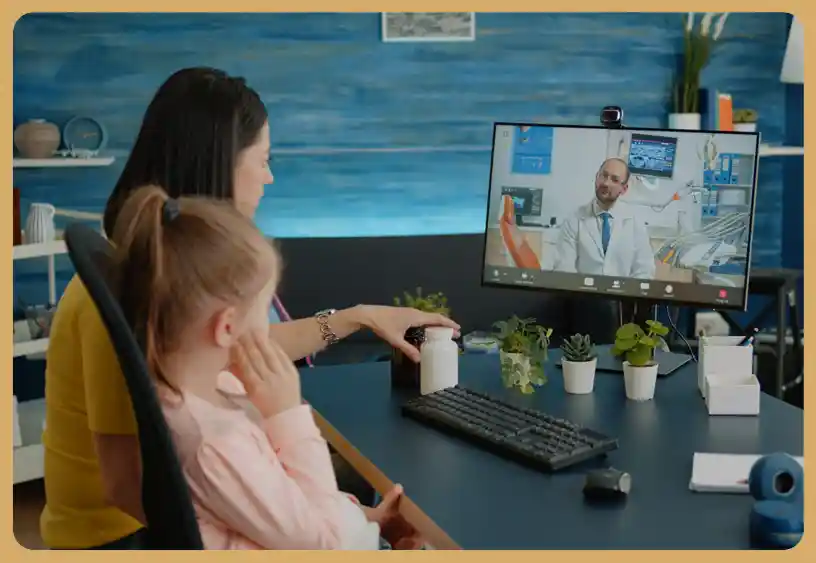
Did you know that up to 90% of people have unwanted thoughts at some point in their lives? These unwanted mental guests can be anything from short-lived fears to upsetting obsessions that won't go away, which is common in conditions like OCD.
Imagine that you're going about your day when, all of a sudden, a strange fear, a disturbing picture, or a nagging question pops into your head. You feel like you can't stop these thoughts, which makes you feel nervous, guilty, or even like you're going crazy. This is the hard truth about having unwanted thoughts of OCD.
But there is hope. To regain control, you must first realize that these thoughts, no matter how upsetting they are are not a mirror of reality. It is not only possible to take back your mental space, but it can also be empowering to do so through realistic tactics and kind self-talk. Stay tuned for more information on how to deal with and get rid of unwanted thoughts that get in the way of your daily life.
What is Intrusive Thought OCD?
Obsessions by definition are repetitive, intrusive, anxiety-provoking, irrational thoughts, images, or urges. In intrusive thought OCD, the person is experiencing intrusive thoughts that trigger anxiety. These could be a fear of becoming unwell, religious or moral concerns, or doubts over one's behavior. While many individuals have fleeting worries, those with OCD have intrusive ideas that linger and can be difficult to manage.
Many times, people with this kind of obsessive-compulsive disorder recognize their ideas are irrational still they find it difficult to stop them. This causes a loop of anxiety whereby mental compulsions or routines meant to try to halt or neutralize the thoughts serve to intensify them. Ignoring therapy for this disorder can significantly affect a person's everyday life, relationships, and day-to-day functioning.
OCD therapy involves realizing that one's actual needs and aims differ from the OCD thoughts. Being able to label the thoughts as “OCD thoughts” or” false brain messages” is an important step in lowering anxiety. Effective therapy frequently combines cognitive behavioral therapy (CBT), especially Exposure and Response Prevention (ERP), and medications to help patients cope with and minimize the consequences of these symptoms. Early on, treatment and support may greatly improve matters by allowing one to regain control over their mental health.
Cognitive Restructuring Techniques and OCD
Cognitive restructuring techniques are essential tools in managing OCD, particularly when dealing with intrusive thoughts. These techniques aim to challenge and reframe the distorted thinking patterns that contribute to obsessive-compulsive behaviors. Here’s how they work and why they're effective:
Identifying Cognitive Distortions
The first step in spotting common cognitive distortions, including catastrophizing (assuming the worst-case scenario), black-and-white thinking (seeing events as all good or all bad), or overgeneralization (drawing broad conclusions from isolated events). Some of the common cognitive distortions in OCD are an inflated sense of responsibility, magical thinking, thought-action fusion, and morality bias to name a few. In the framework of OCD, these distortions can magnify the relevance of intrusive thoughts, giving them a more serious or dangerous appearance than they have.

Challenging Thought Content
Once found, people are taught to question the validity, urgency, and probability of the worst-case scenarios. This is known as de-catastrophization. Examining the data for and against the theory, weighing other interpretations, and assessing the validity of the first assumption under this procedure helps one to make sense of things. For instance, someone with intrusive thoughts about contamination should question the assumption that touching a doorknob would always result in disease by going over data regarding the real hazards involved.
Creating Balanced Thoughts
By the use of cognitive restructuring, people are taught to acquire more realistic and balanced attitudes. This means choosing a more objective and logical viewpoint rather than discounting intruding ideas completely. Reframing the ideas in a less dangerous perspective helps people lower their anxiety.
Practicing Mindfulness and Acceptance
Combining mindfulness approaches with cognitive restructuring helps to promote non-judging awareness of ideas and experiences, therefore complementing each other. Mindfulness helps acceptance and detachment instead of trying to stop or control intrusive ideas.
Seeking Professional Guidance
While self-help materials can teach cognitive restructuring strategies, specific instruction and support usually depend on working with a skilled therapist who has treated OCD. Particularly in exposure and response prevention (ERP), therapists specialized in cognitive-behavioral therapy (CBT) may customize these approaches to fit individual requirements and offer regimented treatments that support long-term recovery.
Tips to Build Resilience
Building resilience is crucial for effectively managing challenges and setbacks in life. Let's see some of the useful tips to broaden resilience.
Develop Positive Relationships
Create good relationships by befriending friends, relatives, or local organizations that might help you. Having a solid support system can assist you both practically and emotionally get through difficult times.
Practice Self-Care
Take care of yourself by putting your physical and mental health first by exercising regularly, eating well, getting enough sleep, and using relaxing methods like yoga or meditation. Taking care of yourself makes it easier to deal with things that stress you out.
Establish sensible objectives
Divide more ambitious tasks into manageable chunks. Break down bigger goals into smaller jobs that you can handle. This method not only helps you reach your goals more easily but it also boosts your confidence as you finish each step.
Maintain a Positive Outlook
Maintaining a good attitude helps you to concentrate on what you can influence rather than on those things you cannot alter. Having a growth mindset enables you to view challenges as opportunities for personal development rather than as chances to fail.
Develop Problem-Solving Skills
Grow in your ability to solve problems. Learn effective problem-solving techniques to improve your own handling of challenges. This entails determining the issue, developing various solutions, selecting which ones would be most effective, and then acting on them.
Practice Adaptability
One should be able to modify and adjust as life is erratic. Recognize that things change and learn to modify your expectations or benchmarks as necessary.
Seek Meaning and Purpose
Look for a cause, a pastime, or an activity that will provide your life direction and significance. Having values and a goal can help you to stay on when times are rough.
Cultivate Gratitude
Create gratitude by routinely considering the things you value. Emphasizing the positive aspects of your life instead of the negative ones increases your resilience and energy.
Learn from Adversity
Learn from mistakes; view them as opportunities for development rather than as failures. Consider how issues have strengthened you.
Seek Support When Needed
Ask for expert treatment or therapy if you are struggling; do not hesitate to do so. Consulting a psychologist or therapist will enable you to grasp and grow in resilience strategies.

At the End of the Day
Resilience development is a road trip with developing good connections, giving self-care first priority, creating reasonable goals, and encouraging a positive attitude. Those who possess problem-solving abilities, practice adaptation, and search for purpose in life will be better able to negotiate obstacles with more strength and flexibility. Resilience is about learning and developing from adversity rather than avoiding it. These approaches can help you develop resilience, which is a valuable tool for dealing with life's inevitable ups and downs with courage.
- Share














